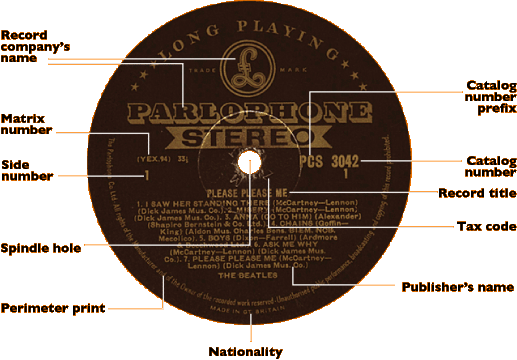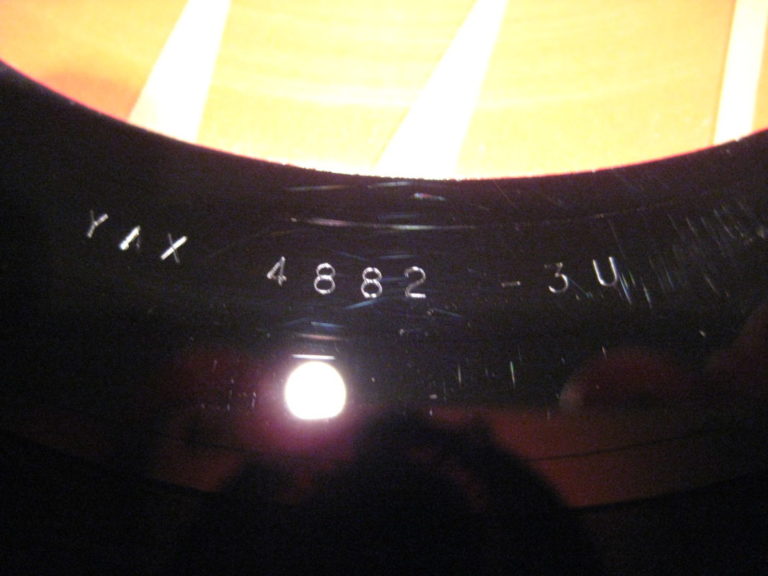How To Tell If A Record Is An Original Pressing
There comes a time when you have to part with a record. It could be you have upgraded your copy, or you are trying to create space in your library, and you want to sell the duplicate, or it could be you want to make some money. While selling your records should be very easy, it can sometimes prove to be a challenging task. You may have seen a copy of some record sell for only a few dollars and seemingly an identical copy of the same sell for hundreds or thousands of dollars. Many things can cause this, including varying conditions of both vinyl, but one of the most critical aspects associated with such is the specific pressing being offered. Keep reading below to learn how to tell if a record is an original pressing so you can make a better decision when buying or selling a record.
To be precise, this is a very extensive subject matter. Every record label has a unique way of cataloging their records. Rather than cover all the possible variations, which can be thousands. Here we take a closer look at the fundamental steps you should follow to know if your record is an original pressing.
Step 1: Check The Sleeve to see if the RECORD IS AN ORIGINAL PRESSING
Many original pressing of a classic record has probably been frequently used. Chances are the sleeve of an original pressing, possibly from the late ’70s will not be in the best condition. This does not mean that near mint original pressings do not exist, but such pressings are very rare to come across. This is particularly true for many party records. In most cases, reissue or newer pressings will have a crisp, clean sleeve with vibrant artwork.
A closer look at the spine of the record sleeve will also help determine whether you have an original pressing. Original pressings usually have a four-letter and number combination like WXYZ-1234. Other records after the second or third pressing have two letters and five number combinations, such as XY-12345.
Step 2: Does The Sleeve Have A Bar Code Or Hype Stickers?
There is no classic record released before the ’80s that will have a barcode on the sleeve. Also, the older original pressings are rarely on the 180-gram vinyl. Any sign of bonus content or something like “Includes the Hit….” It could show later pressings. Also, unless you are considering a recent release, the early original pressings do not include any download code card. Current records, however, can have some of these things. For instance, the original pressing of Mazzy Star’s most recent album “Still” EP does not include a download card.

Step 3: Determine the Catalog Number to make sure that the RECORD IS AN ORIGINAL PRESSING
While this number in itself might not be so significant, it could still give you an idea about the record you want to list. Catalog numbers often started with a 2 or 3 letter code, which is followed by a sequence of numbers. However, these catalog numbers keep changing with time. For example, the united states’ version of “Led Zeppelin II” changed a few years after it was released from the original SD 8236 to SD 19127. If you have different copies of the same record, you should try to compare their catalog numbers and see the variations.
Another way of doing this is by going to Recordgeek.com or Discogs.com to confirm your original pressing. The best way to do this is to try to match the records catalog number with their numbers.
Step 4: What Is Your Edition?
It is important to check whether you have a foreign edition. Some pressings are more collectible if they are foreign. For instance, many collectors search for Pink Floyd’s French pressing “Animals.” Alternatively, some people use the vinyl formulation utilized by the Japanese pressing enterprises. However, there are cases where you can have a foreign pressing that is not quite collectible, mainly because the version was created from the backup master tape instead of the original master tape. It is always important to know precisely where your vinyl was pressed.
These Books From Amazon May Help You
Step 5: Center Label
The next thing that you must always check out for is the center label. Companies such as Reprise used different colors for their center labels on their original pressings. The “tri-tone” Reprise will get more attention as compared to the label’s all-tan version. It is always important to check the label’s copyright notices because some reissues will have a copyright add-on year listed.
Furthermore, some reissue companies inscribe their names on the center label. For instance, if a record was released originally on Elektra, but the record shows Sundazed, then you will know that this is not an original, but a reissue. If your label says Mono, then you can be sure that this might be an original because Mono’s was phased out back in the ’60s.
Step 6: Examine The Dead Wax
The dead wax will reveal any secret you want to know about your record. Most albums will have visible inscriptions; they can be stamped or handwritten, found in the records run-off groove area. Essentially, it is this field that is known as the dead wax. Also, the matrix numbers located here can be useful in determining the type of record you have, what lacquer or stamper was used, or the side of the album you are looking at. These inscriptions are usually made by a mastering engineer who designed the lacquer used for your records pressing plate.
As mentioned earlier, although there are international standards, different companies have unique ways of cataloging their records. The matrix number starts with a catalog number, which is subsequently followed by stamper and side information. Side 1 of an original pressing might end in “1A” or “-A,” with the matrix of side 2 ending with “1B” or “-B1.” Some companies chose to use the “A1/B2” schema. It is for this reason that you should carefully check both sides of the vinyl to know the format used.

A significant exception to this rule is Capitol. There are many instances where Capitol pressings have used letters to show the type of lathe that the lacquer was cut on. For example, Fleetwood Mac’s original pressing of ubiquitous “Rumors” will be something such as “BSK-1-3010 F22.” If this is the reading, BSK 3010 represents the catalog number, F is the Neumann lathe, and “1” between BSK and 3010 is the side. This was the 22nd release and, therefore, not an original pressing. Although it was not the first pressing, it must have been released early in the production of the album.
Remember to look out for any hand-etched or stamped initials. In most cases, mastering engineers will sign their work. That is because most of the engineers have loyal fans that are willing to pay for their hand-etched cuts. For instance, Robert Ludwig’s RL initials that have been etched in the “Led Zeppelin II” will, without a doubt, get your attention. Other initials that you should probably look out for include KG (Kevin Gray), LH(Lee Hulko), RVG(Rudy Van Gelder), BG (Bernie Grundman), and Pecko Duck (George Peckham), just to name a few.
Step 7: General Appearance Of The Record
You should check whether everything is as it ought to be about the record. Check out for anything that looks abnormal about the record, including etched side, holographic labels, and die-cut sleeve, or colored sleeve. Any of these things can show that the record is a limited edition. Most records have a limited collector edition. If the record seems to be flashier than a standard album, then you have one right there.
Final Verdict
While there is no instant way of telling whether a record is an original pressing, we have listed some of the most fundamental tried and tested methods that will get you the results you are looking for. Knowing exactly how a record is printed and distributed makes a huge difference between paying hundreds of dollars for a second or third pressing of the record.
You should not assume that just because a record is shrink-wrapped, then it must be an original pressing. This is one of the tricks that many record sellers use on gullible buyers looking for original pressings.
Following these steps will help you immensely to determine whether you have an original pressing or a reissue.



